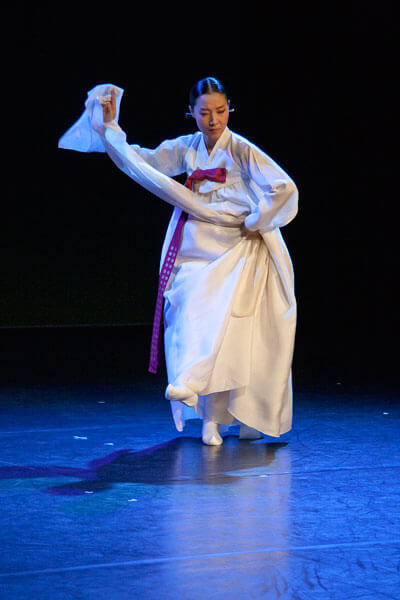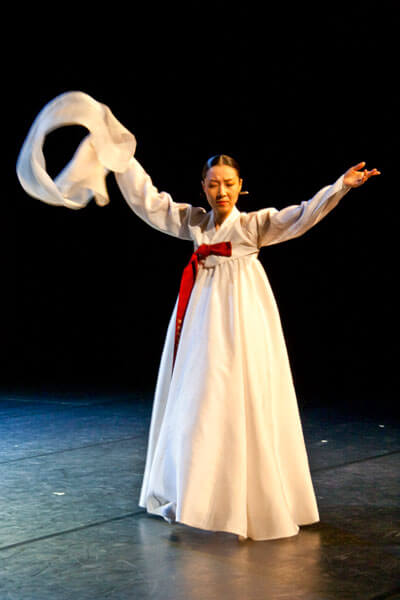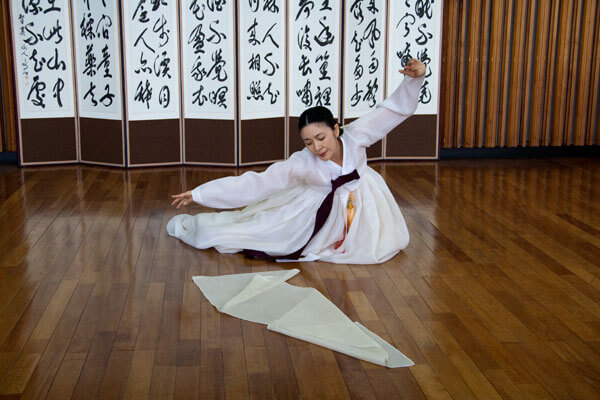The Dances of the Professional Entertainers, The Early “Art” Dances
In Korea there has been a particular class of female entertainers which can be compared to the Japanese geishas. In Korea these public performers and entertainers are called kisaeng. Like the geishas, the kisaeng women were also often well trained in various forms of the arts, such as music and dance. The performances often took place at drinking parties and in public teahouses.
The kisaeng dancers were able to create new compositions by adapting different traditions, such as the shamanistic, Buddhist and court dances. These kinds of creations are called kyobang dances. Many of them are now highly valued “art dances”, and some of them are even declared to be “National Treasures”, although kyobang dances were originally performed by female dancers, but now also often by men.
The Repertoire
- Salpuri was created at the beginning of the 20th century Jukka O. Miettinen
- The long, white handkerchief is an important element of Salpuri Jukka O. Miettinen
- Deep longing is Salpuri’s dominant emotion Jukka O. Miettinen
Probably the most famous of all kyobang dances is Salpuri or the Exorcism Dance. Despite its name, salpuri does not have any direct ritual function. However, it is accompanied by shamanistic music and its movement technique echoes shamanistic dance.
Video clip: The Salpuri number starts slowly in a standing position. Gradually the dancer starts to throw the long handkerchief into the air until it finally lies on the ground. While the emotion grows into deep sadness or longing, the dancer crouches down, and finally almost lies on the floor to reach it. Veli Rosenberg
A long white handkerchief or a scarf plays a major role in the dance. The number starts slowly in a standing position. Gradually the dancer starts to throw the long handkerchief into the air until it finally lies on the ground. While the emotion grows into deep sadness or longing, the dancer crouches down, and finally almost lies on the floor to reach it.
Another popular kyobang dance is the Monk’s Dance, which was created by a dancer who had formerly been a monk. While the performer is dancing he plays a large drum, which is placed on a high stand. The movements of the loose, white monk’s gown and its extended, long sleeves form the highlights of this expressive and hypnotic number.
- Another popular kyobang dance is the Buddhist-influenced Monk’s Dance, also created at the beginning of the 20th century Jukka O. Miettinen
- The movements of the long sleeves dominate the Monk’s Dance Jukka O. Miettinen




